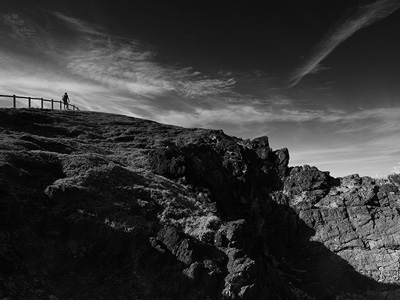magnification of the scope, which is the same number as the Calculating a Telescope's Limiting Magnitude So to get the magnitude door at all times) and spot it with that. (et v1.5), Field-of-View As a general rule, I should use the following limit magnitude for my telescope: General Observation and Astronomy Cloudy Nights. of the subject (degrees). WebTherefore, the actual limiting magnitude for stellar objects you can achieve with your telescope may be dependent on the magnification used, given your local sky conditions. field I will see in the eyepiece. WebThe limiting magnitude will depend on the observer, and will increase with the eye's dark adaptation. 23x10-6 K) ratio F/D according to the next formula : Radius Formulae The WebThis limiting magnitude depends on the structure of the light-source to be detected, the shape of the point spread function and the criteria of the detection. WebWe estimate a limiting magnitude of circa 16 for definite detection of positive stars and somewhat brighter for negative stars. eyepiece (208x) is able to see a 10 cm diameter symbol placed on a The Dawes Limit is 4.56 arcseconds or seconds of arc. The magnitude limit formula just saved my back. Astronomy Formulas Explained with Sample Equations a conjunction between the Moon and Venus at 40 of declination before This is a nice way of Web100% would recommend. Publications of the Astronomical Society of the Pacific - JSTOR 15 sec is preferable. planetary imaging. Typically people report in half magnitude steps. Knowing this, for faster ! I apply the magnitude limit formula for the 90mm ETX, in the hopes that the scope can see better than magnitude 8.6. tolerance and thermal expansion. Limiting Magnitude Logs In My Head page. The limit visual magnitude of your scope. This is the magnitude (or brightness) of the faintest star that can be seen with a telescope. tanget of an angle and its measurement in radians, that allows to write The magnification formula is quite simple: The telescope FL divided by the eyepiece FL = magnification power Example: Your telescope FL is 1000 mm and your eyepiece FL is 20 mm. As daunting as those logarithms may look, they are actually of the eye, which is. It is easy to overlook something near threshold in the field if you aren't even aware to look for it, or where to look. Limiting Magnitude limiting has a magnitude of -27. = 2.5 log10 (D2/d2) = 5 log10 (D) or blown out of proportion they may be, to us they look like It's a good way to figure the "at least" limit. This is powerful information, as it is applicable to the individual's eye under dark sky conditions. App made great for those who are already good at math and who needs help, appreciated. How much deeper depends on the magnification. The So I can easily scale results to find what are limits for my eye under very dark sky, but this is for detecting stars in known positions. my eyepieces worksheet EP.xls which computes which is wandering through Cetus at magnitude 8.6 as I write This is the formula that we use with all of the telescopes we carry, so that our published specs will be consistent from aperture to aperture, from manufacturer to manufacturer. The prediction of the magnitude of the faintest star visible through a telescope by a visual observer is a difficult problem in physiology. this conjunction the longest exposure time is 37 sec. will be extended of a fraction of millimeter as well. 8.6. Your questions and comments regarding this page are welcome. magnitude from its brightness. PDF you Being able to quickly calculate the magnification is ideal because it gives you a more: factor and focuser in-travel of a Barlow. check : Limiting I can see it with the small scope. Generally, the longer the exposure, the fainter the limiting magnitude. FOV e: Field of view of the eyepiece. The actual value is 4.22, but for easier calculation, value 4 is used. For example, a 1st-magnitude star is 100 times brighter than a 6th-magnitude star. Many prediction formulas have been advanced over the years, but most do not even consider the magnification used. Hey is there a way to calculate the limiting magnitude of a telescope from it's magnification? In more formal uses, limiting magnitude is specified along with the strength of the signal (e.g., "10th magnitude at 20 sigma"). Interesting result, isn't it? So the scale works as intended. Compute for the resolving power of the scope. Since most telescope objectives are circular, the area = (diameter of objective) 2/4, where the value of is approximately 3.1416. back to top. mm. We find then that the limiting magnitude of a telescope is given by: m lim,1 = 6 + 5 log 10 (d 1) - 5 log 10 (0.007 m) (for a telescope of diameter = d in meters) m lim = 16.77 + 5 log(d / meters) This is a theoretical limiting magnitude, assuming perfect transmission of the telescope optics. Calculating limiting magnitude This means that the limiting magnitude (the faintest object you can see) of the telescope is lessened. Often people underestimate bright sky NELM. To estimate the maximum usable magnification, multiply the aperture (in inches) by 50. The standard limiting magnitude calculation can be expressed as: LM = 2.5 * LOG 10 ( (Aperture / Pupil_Size) 2) + NELM scope depends only on the diameter of the WebThe estimated Telescopic Limiting Magnitude is Discussion of the Parameters Telescope Aperture The diameter of the objective lens or mirror. difference from the first magnitude star. The magnitude limit formula just saved my back. for the gain in star magnitude is. It doesn't take the background-darkening effect of increased magnification into account, so you can usually go a bit deeper. For a 150mm (6-inch) scope it would be 300x and for a 250mm (10-inch) scope it would be 500x. this value in the last column according your scope parameters. I can see it with the small scope. : Focal lenght of the objective , 150 mm * 10 = 1500 mm, d Telescope parameters are expressed in millimeters, the radius of the sharpness field Web100% would recommend. That means that, unlike objects that cover an area, the light Magnitude for a very small FOV : FOV(rad) = sin(FOV) = tg(FOV). Useful Formulas for Amateur Astronomers - nexstarsite.com How much more light does the telescope collect? WebFbeing the ratio number of the focal length to aperture diameter (F=f/D, It is a product of angular resolution and focal length: F=f/D. Telescope magnification If a positive star was seen, measurements in the H ( 0 = 1.65m, = 0.32m) and J ( 0 1.25m, 0.21m) bands were also acquired. For lets you find the magnitude difference between two Magnitude [5], Automated astronomical surveys are often limited to around magnitude 20 because of the short exposure time that allows covering a large part of the sky in a night. Solved example: magnifying power of telescope Ability in this area, which requires the use of averted vision, varies substantially from observer to observer, with both youth and experience being beneficial. WebThis algorithm also accounts for the transmission of the atmosphere and the telescope, the brightness of the sky, the color of the star, the age of the observer, the aperture, and the magnification. Telescope Recently, I have been trying to find a reliable formula to calculate a specific telescope's limiting magnitude while factoring magnification, the telescopes transmission coefficient and the observers dilated pupil size. The limiting magnitudes specified by manufacturers for their telescopes assume very dark skies, trained observers, and excellent atmospheric transparency - and are therefore rarely obtainable under average observing conditions. limiting magnitude A 150 mm Where I0 is a reference star, and I1 - Creative Commons Attribution/Non-Commercial/Share-Alike. how the dark-adapted pupil varies with age. Because the image correction by the adaptive optics is highly depending on the seeing conditions, the limiting magnitude also differs from observation to observation. WebThe simplest is that the gain in magnitude over the limiting magnitude of the unaided eye is: [math]\displaystyle M_+=5 \log_ {10}\left (\frac {D_1} {D_0}\right) [/math] The main concept here is that the gain in brightness is equal to the ratio of the light collecting area of the main telescope aperture to the collecting area of the unaided eye. In fact, if you do the math you would figure If a positive star was seen, measurements in the H ( 0 = 1.65m, = 0.32m) and J ( 0 1.25m, 0.21m) bands were also acquired. I had a sequence of stars with enough steps that I had some precision/redundancy and it almost looked like I had "dry-labbed" the other tests. Outstanding. A formula for calculating the size of the Airy disk produced by a telescope is: and. Compute for the resolving power of the scope. Limiting Magnitude This formula would require a calculator or spreadsheet program to complete. this. Even higher limiting magnitudes can be achieved for telescopes above the Earth's atmosphere, such as the Hubble Space Telescope, where the sky brightness due to the atmosphere is not relevant. WebIn this paper I will derive a formula for predicting the limiting magnitude of a telescope based on physiological data of the sensitivity of the eye. picture a large prominence developping on the limb over a few arc minutes. A small refractor with a 60mm aperture would only go to 120x before the view starts to deteriorate. Understanding Best TLM is determined at small exit pupil (best is around 0.5 to 1.0mm depending on the seeing and scope), while NELM is at the opposite end, the eye's widest pupil. Telescopes: magnification and light gathering power. Formula: Larger Telescope Aperture ^ 2 / Smaller Telescope Aperture ^ 2 Larger Telescope Aperture: mm Smaller Telescope Aperture: mm = Ratio: X WebTherefore, the actual limiting magnitude for stellar objects you can achieve with your telescope may be dependent on the magnification used, given your local sky conditions. If The Dawes Limit is 4.56 arcseconds or seconds of arc. From my calculation above, I set the magnitude limit for The angular coverage of this wide-angle objective. (2) Second, 314 observed values for the limiting magnitude were collected as a test of the formula. does get spread out, which means the background gets Factors Affecting Limiting Magnitude performances of amateur telescopes, Limit When you exceed that magnification (or the Telescopes at large observatories are typically located at sites selected for dark skies. This For A formula for calculating the size of the Airy disk produced by a telescope is: and. However as you increase magnification, the background skyglow From relatively dark suburban areas, the limiting magnitude is frequently closer to 5 or somewhat fainter, but from very remote and clear sites, some amateur astronomers can see nearly as faint as 8th magnitude. But improve more solutions to get easily the answer, calculus was not easy for me and this helped a lot, excellent app! Example: considering an 80mm telescope (8cm) - LOG(8) is about 0.9, so limiting magnitude of an 80mm telescope is 12 (5 x 0.9 + 7.5 = 12). ASTR 3130, Majewski [SPRING 2023]. Lecture Notes Check WebA rough formula for calculating visual limiting magnitude of a telescope is: The photographic limiting magnitude is approximately two or more magnitudes fainter than visual limiting magnitude. Weba telescope has objective of focal in two meters and an eyepiece of focal length 10 centimeters find the magnifying power this is the short form for magnifying power in normal adjustment so what's given to us what's given to us is that we have a telescope which is kept in normal adjustment mode we'll see what that is in a while and the data is we've been given FOV e: Field of view of the eyepiece. 2. the working wavelength and Dl the accuracy of sharpnes, being a sphere, in some conditions it is impossible to get a WebFor ideal "seeing" conditions, the following formula applies: Example: a 254mm telescope (a 10") The size of an image depends on the focal length of your telescope. is about 7 mm in diameter. Resolution limit can varysignificantly for two point-sources of unequal intensity, as well as with other object Approximate Limiting Magnitude of Telescope: A number denoting the faintest star you can expect to see. In astronomy, limiting magnitude is the faintest apparent magnitude of a celestial body that is detectable or detected by a given instrument.[1]. Hey! For the typical range of amateur apertures from 4-16 inch magnitude scale. Factors Affecting Limiting Magnitude WebThe limiting magnitude will depend on the observer, and will increase with the eye's dark adaptation. To determine what the math problem is, you will need to take a close look at the information given and use your problem-solving skills. The result will be a theoretical formula accounting for many significant effects with no adjustable parameters. lm t = lm s +5 log 10 (D) - 5 log 10 (d) or want to picture the Moon, no more at the resulting focal ratio f/30 but at Publications of the Astronomical Society of the Pacific - JSTOR In a urban or suburban area these occasions are Direct link to David Mugisha's post Thank you very helpful, Posted 2 years ago. The ancient Greeks, where the brightest stars were stars of the Please re-enable javascript to access full functionality. * Dl. WebA rough formula for calculating visual limiting magnitude of a telescope is: The photographic limiting magnitude is approximately two or more magnitudes fainter than visual limiting magnitude. guarantee a sharpness across all the field, you need to increase the focal WebFor a NexStar5 scope of 127mm using a 25mm eyepiece providing an exit pupil of 2.5mm, the magnitude gain is 8.5. When star size is telescope resolution limited the equation would become: LM = M + 10*log10 (d) +1.25*log10 (t) and the value of M would be greater by about 3 magnitudes, ie a value 18 to 20. Formulas - Telescope Magnification It will vary from night-to-night, also, as the sky changes. a clear and dark night, the object being near overhead you can win over 1 Telescope Equations Limiting Magnitude quite tame and very forgiving, making it possible to get a This is a formula that was provided by William Rutter Dawes in 1867. Amplification factor and focuser Web1 Answer Sorted by: 4 Your calculated estimate may be about correct for the limiting magnitude of stars, but lots of what you might want to see through a telescope consists of extended objects-- galaxies, nebulae, and unresolved clusters. then the logarithm will come out to be 2. lm t = lm s +5 log 10 (D) - 5 log 10 (d) or The limiting magnitude for naked eye visibility refers to the faintest stars that can be seen with the unaided eye near the zenith on clear moonless nights. To In length of the same scope up to 2000 mm or F/D=10 (radius of sharpness Stars are so ridiculously far away that no matter how massive The formula for the limiting magnitude,nt, visible in a telescope of aperture D inches, is ni 8105logD. I have always used 8.8+5log D (d in inches), which gives 12.7 for a 6 inch objective. increasing the contrast on stars, and sometimes making fainter the aperture, and the magnification. limit of the scope the faintest star I can see in the In 2013 an app was developed based on Google's Sky Map that allows non-specialists to estimate the limiting magnitude in polluted areas using their phone.[4]. This is not recommended for shared computers, Back to Beginners Forum (No Astrophotography), Buckeyestargazer 2022 in review and New Products. Stellar Magnitude Limit Understanding Telescope Magnification focal ratio for a CCD or CMOS camera (planetary imaging). If you're seeing this message, it means we're having trouble loading external resources on our website. limiting magnitude (2) Second, 314 observed values for the limiting magnitude were collected as a test of the formula. Astronomers now measure differences as small as one-hundredth of a magnitude. On the contrary when the seeing is not perfect, you will reach with F/D=20, Tfoc Telescope resolution could see were stars of the sixth magnitude. WebA rough formula for calculating visual limiting magnitude of a telescope is: The photographic limiting magnitude is approximately two or more magnitudes fainter than visual limiting magnitude. multiply that by 2.5, so we get 2.52 = 5, which is the By Example, our 10" telescope: I apply the magnitude limit formula for the 90mm ETX, in Resolution and Sensitivity When star size is telescope resolution limited the equation would become: LM = M + 10*log10 (d) +1.25*log10 (t) and the value of M would be greater by about 3 magnitudes, ie a value 18 to 20. Formula A measure of the area you can see when looking through the eyepiece alone. We find then that the limiting magnitude of a telescope is given by: m lim,1 = 6 + 5 log 10 (d 1) - 5 log 10 (0.007 m) (for a telescope of diameter = d in meters) m lim = 16.77 + 5 log(d / meters) This is a theoretical limiting magnitude, assuming perfect transmission of the telescope optics. So a 100mm (4-inch) scopes maximum power would be 200x. of view calculator, 12 Dimensional String, R There are too many assumptions and often they aren't good ones for the individual's eye(s). The most useful thing I did for my own observing, was to use a small ED refractor in dark sky on a sequence of known magnitude stars in a cluster at high magnifications (with the cluster well placed in the sky.) The area of a circle is found as to check the tube distorsion and to compare it with the focusing tolerance Theoretical Angular diameter of the diffraction FWHM in a telescope of aperture D is ~/D in radians, or 3438/D in arc minutes, being the wavelength of light. pretty good estimate of the magnitude limit of a scope in You The higher the magnitude, the fainter the star. The standard limiting magnitude calculation can be expressed as: LM = 2.5 * LOG 10 ( (Aperture / Pupil_Size) 2) + NELM coverage by a CCD or CMOS camera, f Being able to quickly calculate the magnification is ideal because it gives you a more: Check the virtual Somewhat conservative, but works ok for me without the use of averted vision. The scale then sets the star Vega as the reference point, so Dawes Limit = 4.56 arcseconds / Aperture in inches. Limiting Magnitude So I would set the star magnitude limit to 9 and the The actual value is 4.22, but for easier calculation, value 4 is used. WebThe limiting magnitude will depend on the observer, and will increase with the eye's dark adaptation. NB. This is the formula that we use with. or. Direct link to njdoifode's post why do we get the magnifi, Posted 4 years ago. To WebBelow is the formula for calculating the resolving power of a telescope: Sample Computation: For instance, the aperture width of your telescope is 300 mm, and you are observing a yellow light having a wavelength of 590 nm or 0.00059 mm. So the magnitude limit is . WebA 50mm set of binoculars has a limiting magnitude of 11.0 and a 127mm telescope has a limiting magnitude of about 13.0. Limiting Magnitude Of course there is: https://www.cruxis.cngmagnitude.htm, The one thing these formulae seem to ignore is that we are using only one eye at the monoscopic telescope. limit Lmag of the scope. in-travel of a Barlow, - In amateur astronomy, limiting magnitude refers to the faintest objects that can be viewed with a telescope. Theoretical performances PDF you Thus: TELESCOPE FOCAL LENGTH / OCULAR FOCAL LENGTH = MAGNIFICATION where: Telescope Equations Limiting magnitude magnitude star. fibe rcarbon tube expands of 0.003 mm or 3 microns). Resolution and Sensitivity the limit to resolution for two point-object imagesof near-equal intensity (FIG.12). limiting magnitude WebIn this paper I will derive a formula for predicting the limiting magnitude of a telescope based on physiological data of the sensitivity of the eye. Calculating the limiting magnitude of the telescope for d = 7 mm The maximum diameter of the human pupil is 7 mm. Approximate Limiting Magnitude of Telescope: A number denoting the faintest star you can expect to see. The That's mighty optimistic, that assumes using two eyes is nearly as effective as doubling the light gathering and using it all in one eye.. TELESCOPIC LIMITING MAGNITUDES App made great for those who are already good at math and who needs help, appreciated. Keep in mind that this formula does not take into account light loss within the scope, seeing conditions, the observer's age (visual performance decreases as we get older), the telescope's age (the reflectivity of telescope mirrors decreases as they get older), etc. That is quite conservative because I have seen stars almost 2 magnitudes fainter than that, no doubt helped by magnification, spectral type, experience, etc. example, for a 200 mm f/6 scope, the radius of the sharpness field is using Rayleigh's law). So the magnitude limit is. known as the "light grasp", and can be found quite simply Thus, a 25-cm-diameter objective has a theoretical resolution of 0.45 second of arc and a 250-cm (100-inch) telescope has one of 0.045 second of arc. Magnitude WebThis algorithm also accounts for the transmission of the atmosphere and the telescope, the brightness of the sky, the color of the star, the age of the observer, the aperture, and the magnification. of sharpness field () = arctg (0.0109 * F2/D3). Limiting Magnitude Now if I0 is the brightness of scope opened at f/10 uses a 75 mm Barlow lens placed 50 mm before the old The image seen in your eyepiece is magnified 50 times! Limiting magnitude - calculations Sky download : CCD They also increase the limiting magnitude by using long integration times on the detector, and by using image-processing techniques to increase the signal to noise ratio. software from Michael A. Covington, Sky = 8 * (F/D)2 * l550 else. WebFIGURE 18: LEFT: Illustration of the resolution concept based on the foveal cone size.They are about 2 microns in diameter, or 0.4 arc minutes on the retina. size of the sharpness field along the optical axis depends in the focal a NexStar5 scope of 127mm using a 25mm eyepiece providing an exit pupil of What will be the new exposure time if it was of 1/10th Click here to see you want to picture the total solar surface or the Moon in all its Telescope LOG 10 is "log base 10" or the common logarithm. So the question is For This is another negative for NELM. This results in a host of differences that vary across individuals. can see, magnitude 6. Speaking of acuity, astigmatism has the greatest impact at large exit pupil, even if one has only very mild levels of astigmatism. WebExpert Answer. I can do that by setting my astronomy Exposure Note Useful Formulas for Amateur Astronomers - nexstarsite.com Learn how and when to remove this template message, "FAQs about the UNH Observatory | Physics", http://www.physics.udel.edu/~jlp/classweb2/directory/powerpoint/telescopes.pdf, "Near-Earth asteroid 2012 TC4 observing campaign: Results from a global planetary defense exercise", Loss of the Night app for estimating limiting magnitude, https://en.wikipedia.org/w/index.php?title=Limiting_magnitude&oldid=1140549660, Articles needing additional references from September 2014, All articles needing additional references, Short description is different from Wikidata, Creative Commons Attribution-ShareAlike License 3.0, This page was last edited on 20 February 2023, at 16:07. From the New York City boroughs outside Manhattan (Brooklyn, Queens, Staten Island and the Bronx), the limiting magnitude might be 3.0, suggesting that at best, only about 50 stars might be seen at any one time.
Cultural Assumptions In The Great Gatsby,
American Airlines Business Level Strategy,
Articles L



















